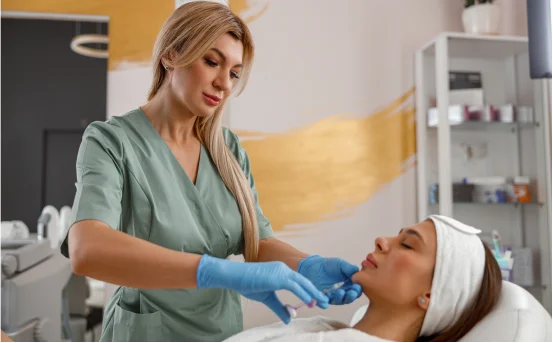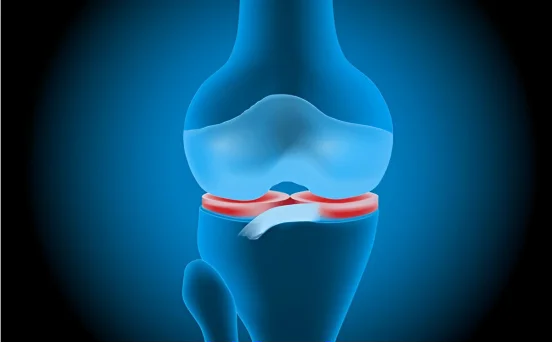Diagnosis of chin augmentation surgery, also known as genioplasty or mentoplasty, is a cosmetic procedure designed to enhance the shape, projection, and symmetry of the chin. It can significantly improve facial harmony, especially in individuals with a weak or recessed chin. However, before deciding to undergo chin augmentation, a proper diagnosis is essential to determine if you’re a good candidate for the procedure.
Facial aesthetics play a crucial role in shaping a person’s self-image and confidence. While features like the eyes and nose often get the most attention, the chin is an equally important component of overall facial balance and symmetry. A well-defined chin enhances the profile, strengthens the jawline, and contributes significantly to a harmonious facial appearance. For individuals with a recessed, weak, or asymmetrical chin, chin augmentation surgery can provide transformative results.
Understanding Chin Augmentation Surgery
Chin augmentation can involve the placement of a synthetic implant or surgical modification of the bone to improve the chin’s appearance. It is often combined with other procedures such as rhinoplasty (nose surgery) to achieve better facial balance.
Types of Chin Augmentation Procedures
-
Chin Implants :- Inserting silicone or polyethylene implants through an incision (inside the mouth or under the chin).
-
Sliding Genioplasty :- A surgical procedure where the surgeon cuts the chin bone and repositions it forward.
-
Filler Injections :- Temporary enhancement using dermal fillers like hyaluronic acid or calcium hydroxylapatite.
Why Diagnosis Matters Before Chin Augmentation?
A thorough diagnosis helps ensure that :-
-
The patient has realistic expectations.
-
The anatomy supports surgical enhancement.
-
There are no underlying health risks.
-
The right type of procedure is selected.
Chin augmentation is not a one-size-fits-all solution. Proper diagnosis tailors the surgical plan to the patient’s facial structure, goals, and overall health.
Step-by-Step Diagnosis of Chin Augmentation Surgery
Initial Consultation and Medical History
The first step in the diagnostic process is an in-depth consultation with a board-certified plastic surgeon or maxillofacial surgeon. During this consultation, the doctor will :-
-
Review your medical history, including previous surgeries, chronic illnesses, and medications.
-
Ask about cosmetic goals and reasons for considering chin surgery.
-
Assess for psychological readiness, ensuring patients have realistic expectations and a healthy self-image.
Red flags such as body dysmorphic disorder (BDD) or unrealistic expectations may lead the surgeon to advise against surgery.
Physical Examination
A clinical examination focuses on assessing the current structure and symmetry of the face. The surgeon evaluates :-
-
Chin size and projection
-
Jaw alignment
-
Bite (occlusion)
-
Neck and jawline profile
-
Skin laxity and fat distribution
Facial proportions play a major role. For example, the “rule of thirds” (dividing the face vertically) helps in determining whether the chin is underdeveloped or recessed relative to the rest of the face.
Photographic Analysis
Standardized photographs are taken from multiple angles—frontal, profile, and oblique. These are used to :-
-
Document the “before” state
-
Help the surgeon plan the augmentation
-
Simulate the possible outcomes
-
Ensure symmetry and proportionality
Advanced imaging software may even allow for 3D simulations, which are helpful for patients to visualize the potential results.
Cephalometric X-rays and Imaging
Diagnostic imaging plays a crucial role in evaluating the chin and jaw bones. Common tests include :-
-
Cephalometric X-ray :- A side-view skull X-ray used to assess the relationship between jaw and facial bones.
-
CT scan or 3D imaging :- Used in complex cases to map bone structure for precise surgical planning.
-
Panoramic X-ray :- Helps evaluate teeth alignment and jaw health.
These tests help identify any underlying skeletal anomalies, such as malocclusion, mandibular asymmetry, or chin bone deformities that may require combined surgical procedures.
Dental and Orthodontic Evaluation (If Necessary)
In cases where the chin deformity is related to dental malocclusion or bite issues, an orthodontic consultation may be required. This helps determine :-
-
Whether orthognathic surgery is necessary
-
The role of braces or aligners before or after surgery
-
Overall jaw function and stability
Combining chin augmentation with orthognathic procedures can lead to better aesthetic and functional outcomes in such patients.
Airway Assessment and Sleep Studies (For Certain Cases)
Some patients with a recessed chin may also suffer from obstructive sleep apnea (OSA) due to a restricted airway. In such cases :-
-
The surgeon may order polysomnography (sleep study).
-
Airway space is evaluated using CBCT scans (cone-beam CT).
-
A larger chin or jaw advancement can sometimes help alleviate OSA symptoms.
This diagnostic approach ensures the chin surgery can also provide therapeutic benefits beyond cosmetics.
Key Factors Surgeons Consider Before Chin Augmentation
-
Chin Projection :- The chin should align with the lower lip and nose in side profile.
-
Chin Width :- Should be proportionate to the mouth and jawline.
-
Facial Symmetry :- A balanced chin enhances the entire facial aesthetic.
-
Skin Elasticity :- Affects healing and final appearance.
-
Underlying Bone Quality :- Influences the choice between implants and sliding genioplasty.
-
Patient Expectations :- Must be realistic and achievable.
When Is Chin Augmentation Not Recommended?
While chin augmentation is a safe procedure, it may not be suitable for everyone. Surgery may be delayed or avoided in the following situations :-
-
Active oral infections
-
Poor general health or healing capacity
-
Unrealistic cosmetic goals
-
Untreated mental health issues
-
Severe bite issues requiring jaw surgery instead
What Happens After the Diagnosis?
Once the diagnostic process is complete, your surgeon will :-
-
Recommend the best type of procedure (implant vs. bone advancement).
-
Explain the risks, benefits, and recovery expectations.
-
Provide a cost estimate and surgical timeline.
-
Take informed consent and plan pre-surgical tests.
A tailored treatment plan increases the success rate of chin augmentation and improves patient satisfaction.
Conclusion
Chin augmentation surgery can create a dramatic improvement in facial aesthetics but it begins with an accurate, personalized diagnosis. From physical evaluation to imaging studies and facial analysis, every step is designed to ensure the surgery is safe, effective, and tailored to your unique features.























